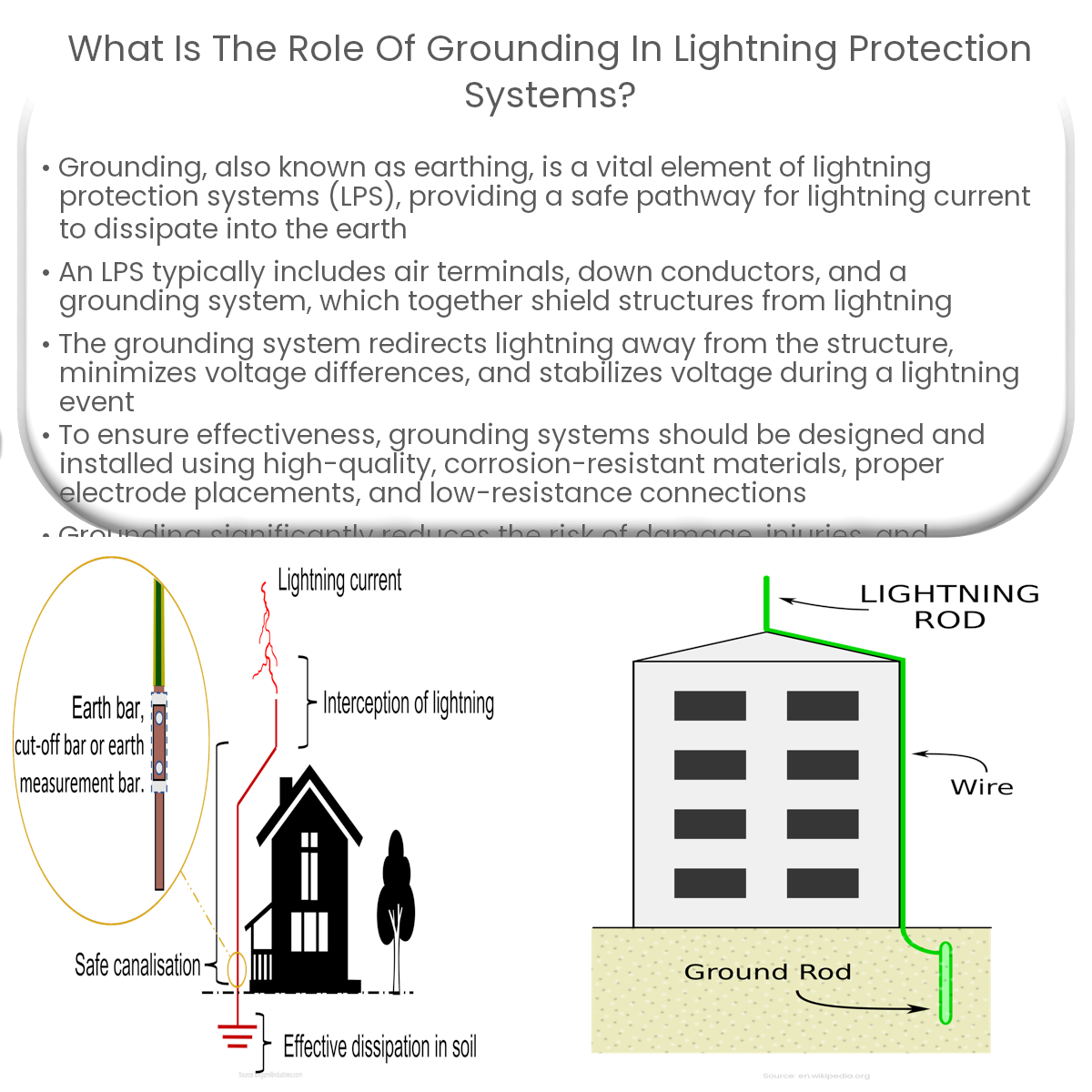Grounding in lightning protection systems provides a safe path for lightning current to dissipate, reducing damage, fires, and injuries.
Role of Grounding in Lightning Protection Systems
Grounding, also known as earthing, is a critical component in lightning protection systems. It serves as a pathway for the lightning current to safely dissipate into the earth, reducing the risk of damage and injuries. In this article, we will explore the role of grounding in lightning protection systems and its importance in safeguarding lives and property.
Components of a Lightning Protection System
A lightning protection system (LPS) typically consists of three main components:
- Air terminals (lightning rods)
- Down conductors
- Grounding system
Together, these components provide a comprehensive and effective solution to protect structures from lightning strikes.
How Grounding Works in Lightning Protection Systems
When lightning strikes a structure, the lightning current seeks the path of least resistance to the ground. The grounding system, as part of the LPS, provides a low-resistance pathway for the lightning current to flow into the earth. This helps to:
- Divert lightning current away from the structure and its electrical systems
- Minimize voltage differences between different parts of the electrical system, reducing the risk of flashover or arcing
- Stabilize voltage levels within the system during a lightning event
Proper Grounding Design and Installation
To ensure the effectiveness of the grounding system, it is crucial to follow best practices in design and installation:
- Use high-quality, corrosion-resistant grounding materials such as copper or copper-bonded steel
- Install grounding electrodes at suitable intervals around the structure’s perimeter
- Ensure low-resistance connections between grounding electrodes, down conductors, and the building’s electrical system
- Test the grounding system’s resistance to ensure it meets required standards and specifications
Importance of Grounding in Lightning Protection Systems
Grounding plays a vital role in lightning protection systems, as it significantly reduces the risk of damage and injury during a lightning event. By providing a controlled and safe path for lightning current to flow into the earth, grounding helps prevent fires, equipment damage, and electrical system failures. Additionally, proper grounding can help minimize the risk of electrocution and other hazards associated with voltage fluctuations during a lightning strike.
In conclusion, grounding is an essential aspect of lightning protection systems, ensuring the safety of people and the protection of property. By following best practices in design and installation, grounding can effectively minimize the risks associated with lightning strikes.


